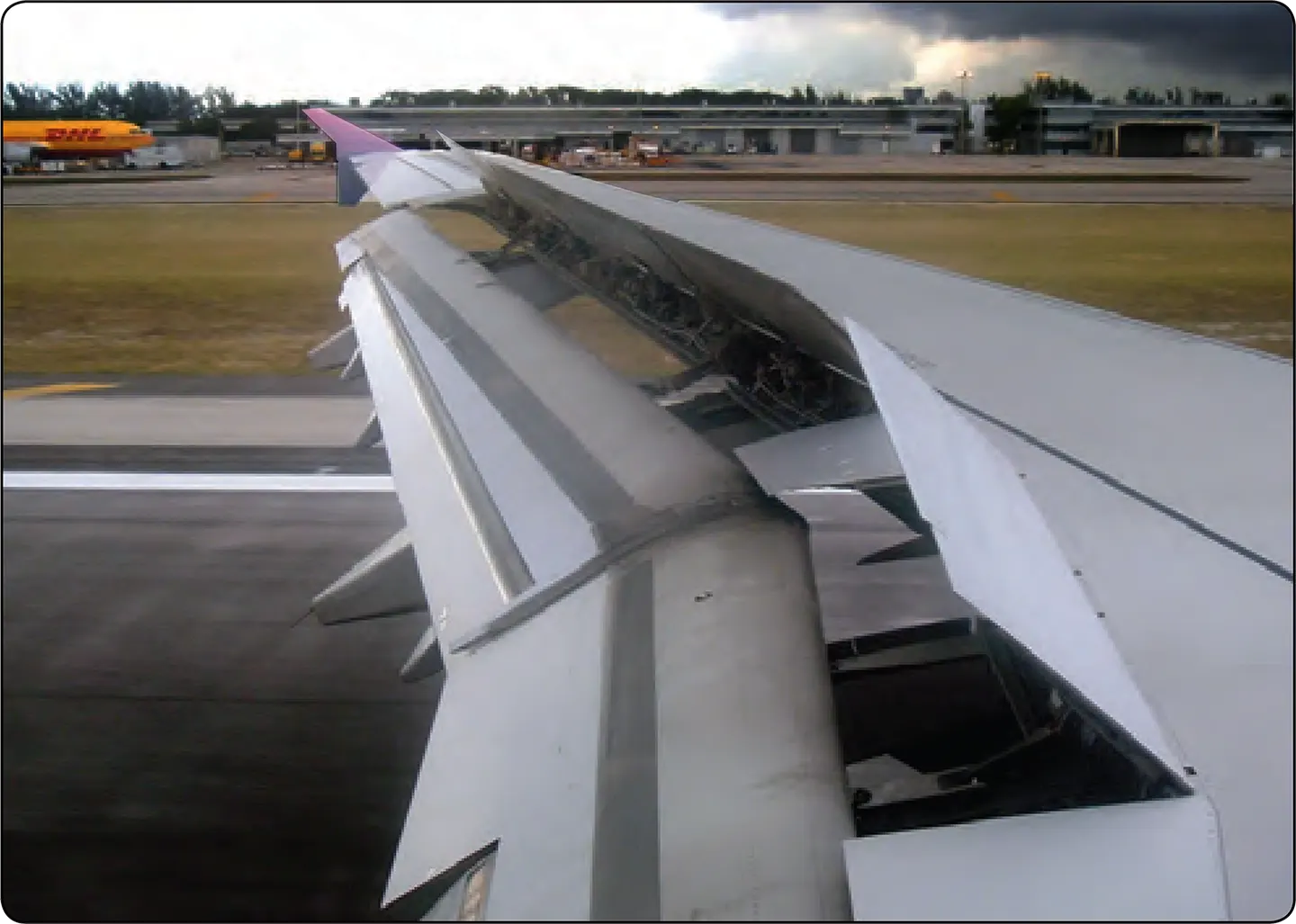Jet airplanes have higher glide ratios than piston-powered airplanes. Due to their low drag design, jets take more time and distance to descend or reduce speed. Therefore, jet airplanes are often equipped with drag devices, such as spoilers and speed brakes.
The primary purpose of spoilers is to spoil lift. The most common type of spoiler consists of one or more rectangular plates that lie flush with the upper surface of each wing. They are installed approximately parallel to the lateral axis of the airplane and are hinged along the leading edges. When deployed, spoilers deflect up against the relative wind, which interferes with the flow of air about the wing. [Figure] This both spoils lift and increases drag. Spoilers are usually installed forward of the flaps but not in front of the ailerons so as not to interfere with roll control. Some aircraft use spoilers to augment roll control.

When flight and ground spoilers are deployed after landing, most of the wing’s lift is destroyed. This action transfers the airplane’s weight to the landing gear so that the wheel brakes are more effective. A secondary beneficial effect of deploying spoilers on landing is that they create considerable drag, adding to the overall aerodynamic braking.
The primary purpose of speed brakes is to produce drag. Spoilers may also serve as speed brakes, or they may be panels attached to the fuselage. Deploying speed brakes results in a rapid decrease in airspeed and/or an increased rate of descent. Typically, speed brakes can be deployed at any time during flight. There is usually a certain amount of noise and buffeting associated with the use of speed brakes, along with an obvious penalty in fuel consumption. Pilots can minimize the use of speed brakes with proper descent and approach planning. Procedures for the use of spoilers and/or speed brakes in various situations are contained in the FAA-approved AFM for the particular airplane.
